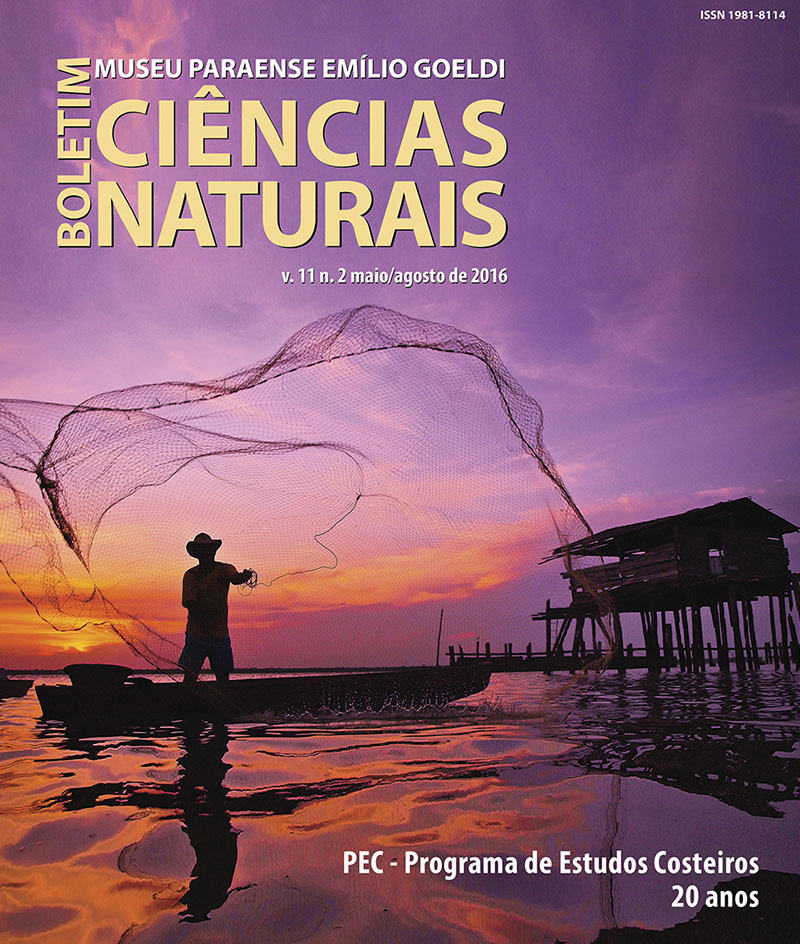Comparison of captures by different types of fish-traps in three environments of the northern Brazilian coast
DOI:
https://doi.org/10.46357/bcnaturais.v11i2.424Keywords:
Artisanal fishing, Corral fishing, Coast of Pará, Fish production, Fish compositionAbstract
This study compared the fish production and catch composition of different types of fish-traps used in coastal and river waters of the northern Brazilian coast. Through interviews and participant observation, the production from 12 fish-traps of three types of traps: “coração,” “enfia,” and “cachimbo” was monitored. Data were recorded every time fish were removed for three consecutive days during the new moon in the months from June to August 2012. In total, 4,274 fish were captured, belonging to 9 orders, 20 families and 43 species. The order Perciformes was most diverse, with more families (50%), species (44%) and individuals (75%). The family Ariidae was more abundant in number of species (23%). Macrodon ancylodon (51%), Sciades couma (9%), Cynoscion virescens (9%), and Mugil incilis (4%) were the most abundant species. Comparison of the captures and the environments of the fish-traps indicated that total production differed among the types of traps, associated with their locations. The “coração” trap type was most productive in the coastal area than in the river area. Despite a gradual increase in total production from June to July, fish captures in the river beach showed a decline during these months.
Downloads
Published
Issue
Section
License
Publication means fully assigning and transferring all copyrights of the manuscript to the journal. The Liability Statement and
Assignment of Copyrights will be enclosed with the notice of acceptance. All the authors must sign the document and return it to the journal.








